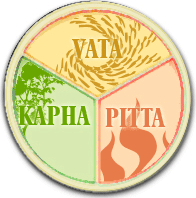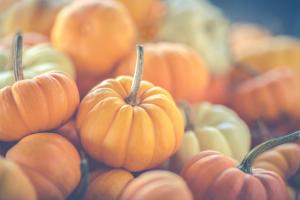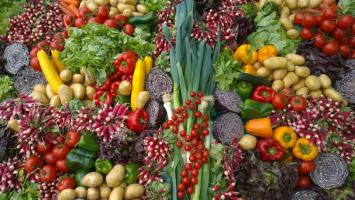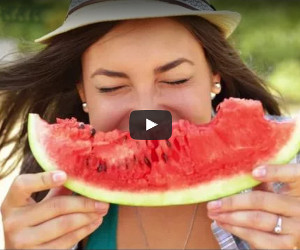BONE & JOINT HEALTH

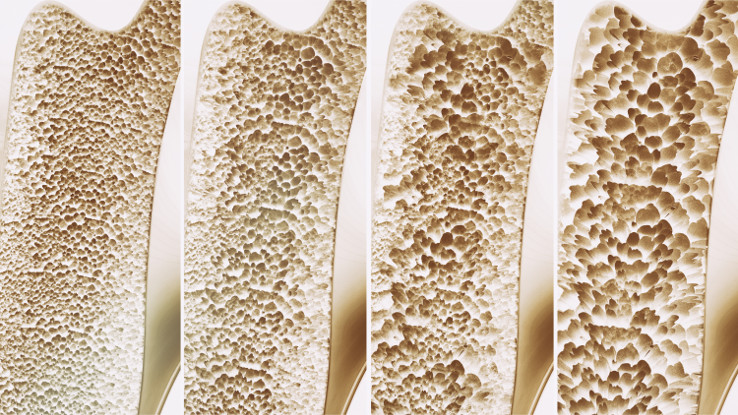 Categories in Bones MusclePostureJoint, Tendon, & LigamentMuscleBonesHairNailsIntroductionBones carry you the whole way through your life. From the moment you are born, bones support you and protect you from danger. Over a lifetime, they are put under tremendous strain. The strength of your bones are tested, and while they provide stability, they can can also become frail and worn down. They weaken with age. Often people don't even know they have low bone density until they fracture their foot.But bones also heal, regenerate and continue carrying out their essential functions. They aren't solid like stones. They are always changing, even in adulthood, as they adapt to the daily strain they are put under. Bones are alive, growing and always changing. Sometimes they change for the worse, as cells called osteoclasts break down bone tissue. Sometimes the change for the better, as cells called osteoblasts build up bone tissue. Bones are hidden from view. They seem sturdy at first glance. So, the news that your have osteopenia or osteoarthirtis can come as a great surprise. You may wonder, what can you do to help your bones, and get relief from these conditions naturally? Fortunately, Ayurveda contains a wealth of information to help you rebuild and strengthen your bones and joints. Bone health is incredibly important to longevity and healthy aging. The first step to natural bone health is self assessment. Although the bones are hidden beneath the surface of your body, with Ayurveda you can learn how to assess the strength of your bones, so you can monitor progress between doctor's visits. Ayurveda does this by examining secondary tissues (upadhatus) and waste products (malas). If your hair, teeth and nails are strong, this indicates strong bones. However, scant hair, weak teeth and brittle nails can indicate weak or deficient bone tissue (asthi dhatu). If you have white spots on your nails, that could mean mineral malabsorption - that your bones are getting depleted. Analysis of the tongue can also reveal the health of the bones, in particular, the level of mineral absorption. Chronic malabsorption displays as scalloped teeth marks along each side of the tongue. Through a comprehensive review, the health of a person's bones, and the root cause of any disorder, can be understood and amended at its source. The Role of the BonesBones provide support and shape to the body, and allow for the movement of muscles. As the densest tissue in the body, they protect internal organs including the brain, heart and lungs. Bones don't just support and protect though, they also act as a storehouse of essential nutrients including iron, copper and zinc. They can help maintain water electrolyte balance through regulation of calcium, magnesium, sodium and potassium. Also, bone marrow produces red blood cells and most white blood cells too. Bones are also considered an excretory tissue in Ayurveda and can eliminate unwanted heavy metals through the hair and nails.The Ayurvedic ApproachThe health of the bones are closely related to the health of the digestive system in Ayurveda. Most importantly, an imbalance in the digestive system will lead to an accumulation of digestive toxins (ama). When these toxins circulate in the blood, it creates an acidic environment. The body may draw alkaline calcium from the bones to buffer the acid the acidic condition. This calcium depletion from the bones can weaken the bones and teeth. Ama can also lodge in the joints and create pain, discomfort and lack of mobility. The colon is also closely related to the health of the bones, as it is the primary site for mineral absorption. Nourishing the entire digestive tract, particularly the colon, reducing gas and bloating, and stimulating efficient mineral absorption is key to ensure good bone quality.What Causes an Imbalance in the BonesAs mentioned previously, ama is a leading cause of most bone disorders. Ama stems from weak digestive strength (agni) which is most commonly the result of eating an inappropriate diet for you body type. A diet lacking essential nutrients and minerals will also reduce bone strength.Physical trauma, such as that experienced in contact sports like football or rugby, can break or wound the bones. Trauma like this can create a weak spot (khavaigunya) where digestive toxins are more likely to lodge. However, light exercise and moderate stress on the bones actually strengthens them. Improper exercise, like consistent running on pavements, or no exercise at all, will decrease bone density. If a person is overweight, this will also add excess pressure on the joints and the bones. The climate can fuel an aggravation, particularly in the joints. Cold weather can increase cracking and pain in the joints, while hot, humid weather is more likely to aggravate rheumatoid arthritis. Women going through menopause are also more likely to experience weaker bones, as their bones lose density as a result of decreased estrogen, a hormone that protects and maintains bone health. Common AilmentsOsteoporosis/OsteopeniaOsteoporosis, and its less severe counterpart osteopenia, are conditions where the bones gradually become thinner, lose density and are more likely to fracture. In Ayurveda, this is a condition related to Vata dosha, so a Vata pacifying diet and lifestyle should be followed. Bone broth soup is an essential preventative remedy, as it is nutrient dense, easy to digest, nourishes the bones and pacifies Vata due to its grounding and warming qualities. Bone broth also contains collagen, glucosamine and chondroitin which are essential ingredients for healthy bones. Adding mineral rich foods that are dense, stable and heavy will increase bone density, particularly foods with a high calcium content such as seaweed, sardines, tofu, leafy greens like kale and sesame seeds. Also, adding healthy fats to the diet will nourish the fat and muscle tissue. These act as shock absorbers for the bones and can reduce the risk of fracture.OsteoarthritisOsteoarthritis is a degenerative condition of the joints. It occurs when the protective layer of cartilage that cushions the joints and allows for smooth movement (shleshaka kapha), breaks down. It can lead to pain, swelling and lack of mobility in the joints. Good alignment gained through physical therapy, yoga and proper posture will prevent excess wear and tear on the joints. Yogaraj guggulu supports comfortable movement of the joints and scrapes away the Vata ama that can become lodged in the joints in this condition. Applying castor oil topically to the affected areas also destroys Vata ama in cases of osteoarthritis. Osteoarthritis can be inflammatory causing certain proteins (cytokines) to develop which can further degenerate the cartilage. The active ingredient in turmeric, curcumin, can reduce this inflammatory process and prevent further cartilage degeneration.ScoliosisScoliosis is a sideways curvature of the spine. Many people have a slight curvature and don't even know it's there until a doctor points it out. But in more serious cases, the spine curves far beyond its normal range and can strongly inhibit mobility and affect major organs including the lungs and heart. In these cases, ongoing medical rehabilitation and surgery is often required. In minor cases, you can help maintain good spinal alignment by strengthening the muscles around the spine - equally on both sides. This can be done through physical therapy, regular yoga and exercises such as swimming. While this alone is not enough to avoid scoliosis, it can help reduce pain or discomfort experienced in mild cases.Broken BonesAyurveda has many traditional remedies to assist the healing of broken bones. Bala is used in Ayurveda to impart strength on the body, but has been declared unsafe for internal consumption by the FDA. However it can be used externally. Ashwagandha/Bala oil combines bala with another herb, ashwagandha, that is also praised for its ability to increase strength and stamina when healing. Arjuna and shilajit are also known for their wound healing properties and are used to assist the mending of broken and fractured bones in Ayurveda.Bone TonicsVataVata body types are prone to weaker, thinner or more brittle bones than other body types. They are also more likely to develop cracking joints and arthritic conditions, so they should make sure to nourish their bones. The first step for Vata is to nourish and clean the colon using an herb such as haritaki. This will prevent further accumulation of ama, reduce gas and bloating, and improve mineral absorption. Haritaki also rejuvenates and tonifies the colon. Vatas are more likely to experience achy joints. Regular application of mahanarayan oil helps relax muscles and lubricate joints for comfortable movement. It is also warming and can alleviate joint pain.PittaPitta body types are most likely to experience inflammatory conditions of the joints. Kaishor guggulu pacifies Pitta and arthritic inflammation such as pain, swelling or redness of the joints. This rejuvenative formula targets the musculoskeletal system and scrapes away deep seated ama. Aloe vera juice is also an appropriate general tonic to soothe the digestive tract and reduce Pitta ama and inflammation.KaphaKapha types naturally have the strongest and healthiest bones. However, they are still prone to accumulations of ama. Trikatu will stimulate a sluggish Kapha digestive system and clear ama from the GIT. Frankincense (boswellia) acts as a rejuvenative for Kapha and is useful in cold and damp conditions in the joints including swelling and pain. It also decongests the channels, mends bones and scrapes deep ama.ConclusionThe bones are a living tissue in the body. They change, adapt, break and regrow. They protect you throughout life, but bones must be tended to to ensure lifelong health. Ayurveda has a unique and advantageous approach to understanding the health of the bones. You can check in with the health of your bones every day - what condition are your teeth, hair and nails in? These secondary tissues and waste products of the bone can reveal a lot about what is going on internally. In Ayurveda, digestive toxins, or ama, are one of the main culprits that affect bone health. Following a diet according to your body type and using some digestive stimulants will help clear the accumulated ama and prevent it from lodging in and disrupting your delicate joints. Bones can rejuvenate and replenish themselves, and this process can be assisted with the use of bone tonics according to your dosha. Take care of your bones and they will take care of you.HOW AYURVEDA WORKSARE YOU WONDERING HOW AYURVEDA CAN HELP YOU?WHY IS AYURVEDA THE RIGHT SOLUTION?Ayurveda strengthens the body while opposing disorders. It takes a holistic, systemic approach that looks at the whole body. Ayurveda shows how to interpret signs and symptoms of imbalance, and how to address them using diet, lifestyle adjustments, and herbs. It shows a person how to optimize their health on a continual basis. You can't take the doctor home with you, but you can take Ayurveda home with you. Ayurveda is the most advanced and easy to use home system for self healing.HOW DOES AYURVEDA WORK?Ayurveda starts by identifying your body type, which identifies certain tendencies in your body to get sick (as well as identifying your strengths). It uses body type to determine the likely root causes of your disorders. Next, Ayurveda analyzes the nature of your disorder. It fits all your signs and symptoms into a pattern, expressed as a combination of biocharaceristics (gunas). For example, you may have a heat disorder, a cold disorder, or an oily disorder, etc. This simple categorical approach shows you how to correct systemic imbalances and strengthen your body as a whole.On Joyful Belly, we've created an extensive categorization of food so you can easily match food to your imbalanced biocharacteristics. By eating an optimal diet that balances your biocharacteristics, your whole body is strengthened and the conditions that created the disorder are removed. Once the root causes of the disease are removed, the disease lessens in strength or disappears altogether. Additional remedies - such as herbs and lifestyle practices - focused on the specific disorder, can greatly enhance your healing. GET STARTEDTo get started on your Ayurvedic journey, we first recommend that your find your body type by taking our free quiz. In Ayurveda, every solution is based on your unique body type, so by taking this quiz, you’ll get the best results. |
Join Joyful Belly.
Want our top Ayurvedic recipes and health tips?Subscribe to our free newsletter!


